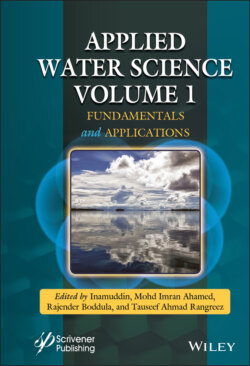Читать книгу Applied Water Science - Группа авторов - Страница 24
2.2 Occurrence and Behaviour of Pharmaceutics in Aquatic Systems 2.2.1 Nature and Sources
ОглавлениеIn the current chapter, the term “pharmaceuticals” is broadly used to refer to “pharmaceuticals” used to treat human and animal infections sensu stricto and their precursors and metabolites. Figure 2.1 summarizes the main classes of pharmaceuticals used for the treatment of human infections. The main classes include antibiotics, diuretics, contraceptives, cancer therapeutics, beta-blocker, anti-inflammatory analgesics, neuroactives, steroids and related hormones, and lipid regulators (Boxall, 2004; Aus der Beek et al., 2016; Szymonik et al., 2017). Pharmaceuticals commonly used in veterinary applications include ionophore antibiotics, growth promoters, and nutritional supplements (Bottoni et al., 2010; Bartros and Peneulas, 2017). Other pharmaceuticals such as Diclofenac are widely used analgesic and anti-inflammatory drugs in both human and veterinary applications (Aus der Beek et al., 2016). Thus, globally, diclofenac is one of the most frequently detected pharmaceutical in environmental samples (Aus der Beek et al., 2016). Common examples of specific pharmaceuticals include carbamazepine (antiepileptic), sulfamethoxazole (antibiotic), and ibuprofen and naproxen, which are both analgesics (Aus der Beek et al., 2016). The various classes tend to have contrasting physico-chemical properties. For example, beta-blockers have variable hydrophobicity, while lipid regulators and antibiotics are hydrophobic compounds (Monteiro and Boxall, 2010). Hormones and steroids also tend to be hydrophobic (Monteiro and Boxall, 2010, 2016).
Figure 2.1 Summary depiction of the nature, sources, behaviour, human exposure and health risks, and removal of pharmaceuticals in aquatic systems.
Figure 2.1 summarizes the hotspot sources and reservoirs of pharmaceuticals in aquatic systems. Major sources include solid wastes and wastewaters from (1) medical facilities such as hospitals, (2) veterinary facilities, (3) livestock husbandry and abattoirs, and (4) pharmaceutical industries (Bound and Voulvoulis, 2005; Paiga et al., 2016; Gwenzi and Chaukura, 2018; Ragowska et al., 2019). Municipal wastewater treatment systems, which receive wastewater and effluent streams from various sources, act as reservoirs of pharmaceuticals and their metabolites (Nikolaou et al., 2017). This is because wastewater treatment plants based on conventional treatment processes only achieve limited or partial removal of pharmaceuticals (Nikolaou et al., 2007). For example, Kay et al. (2017) observed that raw sewage from sewer overflow is a significant source of pharmaceuticals in surface aquatic systems. Other potential hotspot sources which are currently under-studied include waste/wastewaters from (1) solid waste repositories such as non-sanitary landfills or waste dumps, (2) on-site sanitation systems such as septic tanks and pit latrines, (3) mortuaries and funeral parlors, and (4) gravesites and cemeteries (Gwenzi and Chaukura, 2018). Due to poor solid waste and wastewater management practices in developing countries, these under-studied sources could be significant sources of pharmaceuticals released into aquatic systems.
